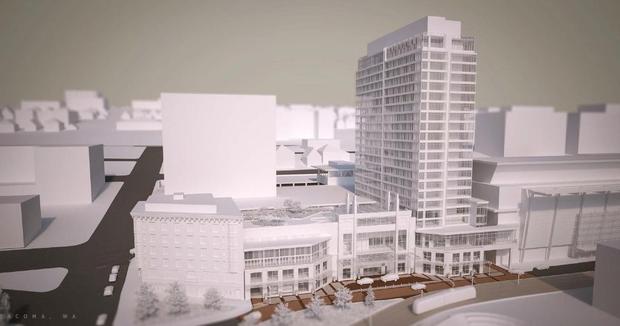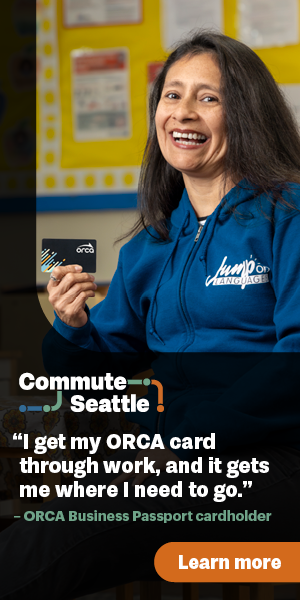
Tacoma urbanism: Details on the latest revision to Downtown Tacoma’s future 240-foot hotel and 140-foot residential towers.
The NEC is key: A discussion on how important the Northeast Corridor with 750,000 daily riders. Meanwhile, the debate over rail safety may never the same in light of the Philadelphia Amtrak derailment.
It’s the trends: Goldy says that the city is the new suburbs.
Need for all-day transit: 3 infographics depict why cities need quality all-day transit, not just at peak hours.
Charlottesville style: How to design pedestrian malls that work.
Safer Rainier Ave: What do Bruce Harrell and a chicken have in common? They support the Rainier Ave Safety Corridor Project and made it clear in this week’s community street protest.
Rising wages: LA jumps into the $15 Now movement by enacting legislation to increase wages to the figure by 2020.
Not all big cities are urban: A look at just how suburban some large cities are in the US.
Sinking feeling: Surprise! Dewatering caused Pioneer Square to sink thanks to WSDOT and their contractors. Naturally, the project to finish the deep bore tunnel continues to increase in delays.
Socially conscious developer: Bellwether Housing picks up and rehabs a Queen Anne property while using unique financing to ensure that rents are affordable for tenants.
Free reinvention: Omaha gets creative with their bus network and completely enhance it with no additional money.
Eastlake bike lanes: Seattle Bike Blog says that Eastlake bike lanes would be a boon for businesses and regional transportation.
Winners, but mostly losers: The affordable housing shortage across the US is causing a huge cost to the country’s economy to the tune of $1.6 trillion. But this didn’t just happen overnight, the trends have been pushing rising rents for a long time. Meanwhile, New York City’s public housing is in crisis and Vancouver, BC is waking up to a bad reality.
Growing taller: Vox shares a chart of just how much taller buildings are getting across the globe.
Map of the week: A clever map of Iceland’s extensive bus network.
A very car-lite future?: A futurist simulation shows that self-driving “taxibots” will reduce cars by 90%.
Eastside green street: Kirkland, an Eastside suburban city, has the world’s greenest street, by at least one unique measure.
Comprehensive planning: Governing asks just how well a city can predict its future growth by planning 20 years out. Seattle is the case study.
Global climate change: Bringing us down to earth, NASA shows how quickly a 10,000-year-old ice shelf can disintegrate thanks to global warming trends.
A moral obligation: Some leaders in the planning field think that urban design and planning can help reduce police violence, but it can also be used to create violence, too.
Bus bunching: An excellent visualization of just how bus bunching occurs.
Stephen is a professional urban planner in Puget Sound with a passion for sustainable, livable, and diverse cities. He is especially interested in how policies, regulations, and programs can promote positive outcomes for communities. With stints in great cities like Bellingham and Cork, Stephen currently lives in Seattle. He primarily covers land use and transportation issues and has been with The Urbanist since 2014.





